Clematises vines: How to grow and care for Clematis?
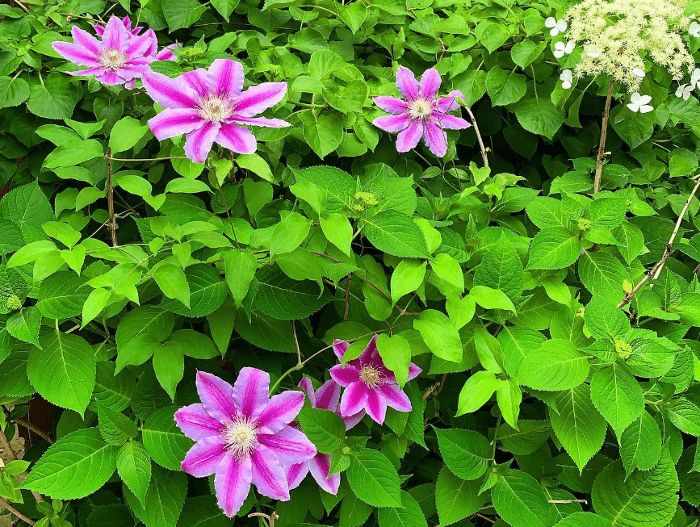
Clematises: Clematis (Clematis spp.), named also “the queen of the vines” is a genus of climbing plants belonging to the Ranunculaceae family. This genus includes more than 300 species and hundreds of hybrids of Clematis plants, with woody, deciduous vines as well as herbaceous and evergreen varieties. Clematis plants can also have doubles, and semidouble flowers in the form of saucers, bells, tubes, tulips and open bells. Moreover, they are one of the most popular garden plants that are easy to grow if we respect a few planting rules.
Find out in this article all you need to know about how to grow and care for these attractive plants and what are the most popular and easy to maintain Clematis species!
How to propagate Clematis?

Propragating Clematis is easier by cutting, but grafting and layering are quite complex, so they are reserved for experienced gardeners.
To propagate Clematis take already rigid cuttings of about 20 cm in length including 2 nodes, in June-July when the shoots of the year begin to lignify. Then, remove the leaves from the base and cut the others in half to reduce evaporation. After that, prick the cuttings into 10 cm diameter pots in a mixture of moist heather soil and sand and cover the pot with transparent plastic and install everything in a warm place (25 °C).
How to plant Clematis?
You can plant Clematis out of the frost periods, either in autumn or in spring. Put the root ball inclined towards the wall in a mixture of fairly light garden soil and compost. Respect a distance of 20 to 30 cm between the foot and the wall, so that the foot can be watered by the rain. Furthermore, the best is that the foot remains in the shade. So, plant other flowers around the foot to keep it cool. Then, if the base is exposed to the sun’s rays, cover it, for example, with a tile or a few stones.
How to care for Clematis?
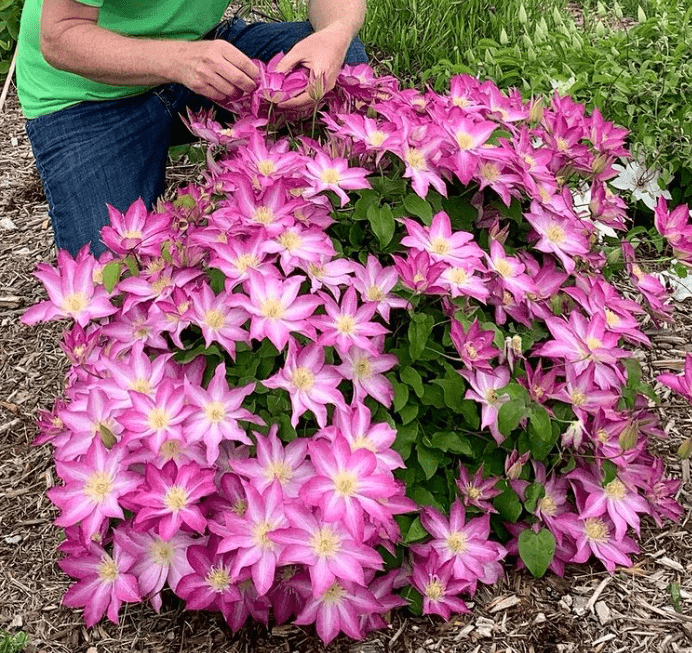
Clematis care is generally easy, you have just to respect some specific conditions.
Soil
These plants appreciate fresh, drained and rich soil. You can grow Clematis in clayey, sandy or humus soil, but preferably not calcareous.
Light
Clematis adapt very well to a sunny and shady place. However, it is necessary to protect the foot with an object like a tile or a stone to avoid direct sunlight.
Watering
Watering is recommended during the first 2 years. It is also important to water in case of dry weather because Clematis like moist and cool soil. In pots, regular watering is required, especially in summer. Try to always keep the soil slightly moist.
Fertilizer
Clematises will grow and flower better with some supply. Fertilise your Clematis each year in the spring especially if the soil is not rich enough, to improve growth and flowering throughout the seasons.
Pruning
Pruning is essential for the better development of the clematis and to encourage its flowering. Clematis are usually pruned at the end of February, pruning the stems 30-40cm from the ground. However, depending on the species or varieties, pruning is more or less severe and is not practised at the same time. A Clematis trellis will be a great idea to support your plant after pruning.
Clematis pests and diseases
Clematises insect pests include aphids, vine weevils, slugs/snails, scale insects, spider mites, and earwigs.
The most serious disease for Clematis plants is commonly called clematis wilt. It is a stem rot/leaf spot disease caused by a fungus. It mainly affects large-flowered Clematis hybrids. This plant is also susceptible to powdery mildew, rust and viruses.
Clematis species
We are growing Clematis for their flowers, so it makes sense to choose one that appeals to you most and works well with your interior decoration as well as the rest of your garden. Here is a list of the most recommended Celamtis varieties that will absolutely suit any location.
Clematis montana
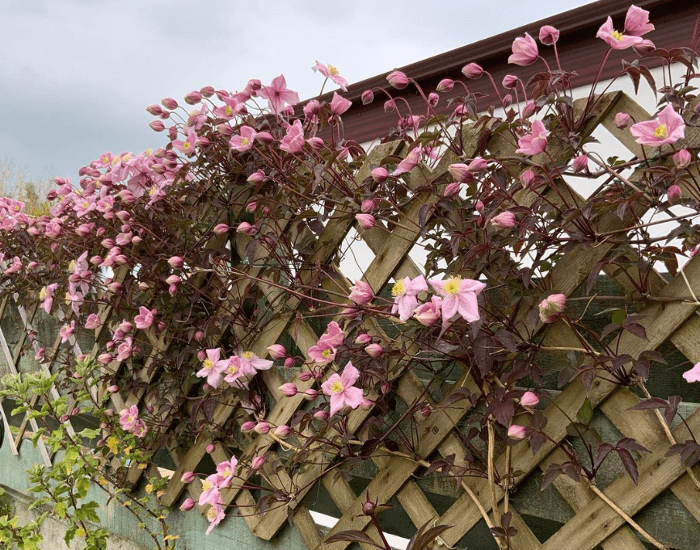
Montana Clematis, named also the mountain clematis, Himalayan clematis or anemone clematis, is a flowering plant in the buttercup family Ranunculaceae. This climbing Clematis is native to central China and the Himalayas and it is among the best known thanks to its small pink flowers that bloom in spring and cover the wall with attractive showy flowers. In some varieties, the flowers give off a more or less pronounced vanilla scent. Then, In autumn and winter, its feathery fruiting brings a touch of fantasy to the garden.
Clematis alpina
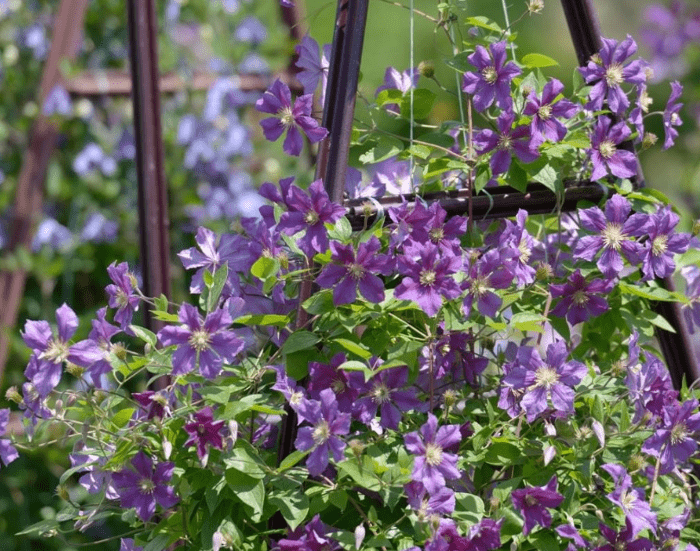
Clematis alpina, or the Alpine Clematis, is a flowering deciduous Clematis vine native to Switzerland. These Clematises species have finely cut leaves and small blue bell-shaped flowers that bloom from March to June. There are also many cultivars with white, pinkish, pink, blue and white Clematis flowers, or with double corollas.
Clematis Macropetala
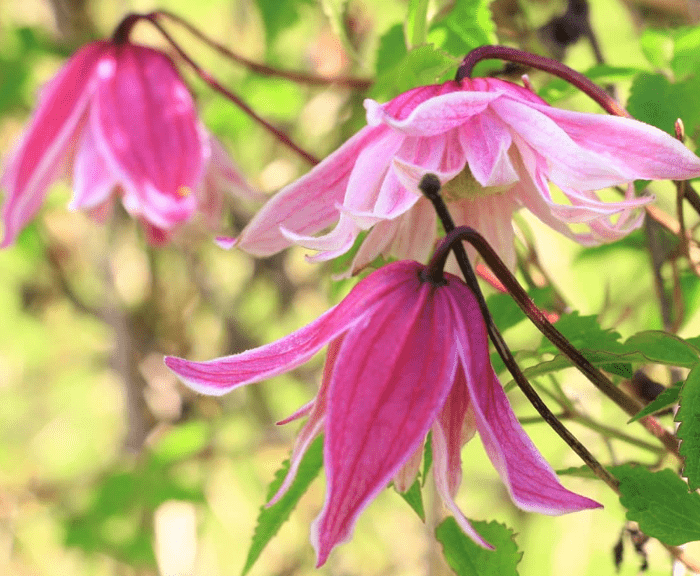
Clematis macropetala, known commonly as Downy Clematis is a deciduous Clematis climber with attractive, toothed leaves divided into leaflets with sharply serrated edges. Bell-shaped, pale purple-blue flowers Bloom in spring with some blooms in late summer then followed by very ornamental, silvery seedheads. This purple Clematis grows well in fertile, medium moisture and well-drained soil in full sun to part shade.
Clematis armandii
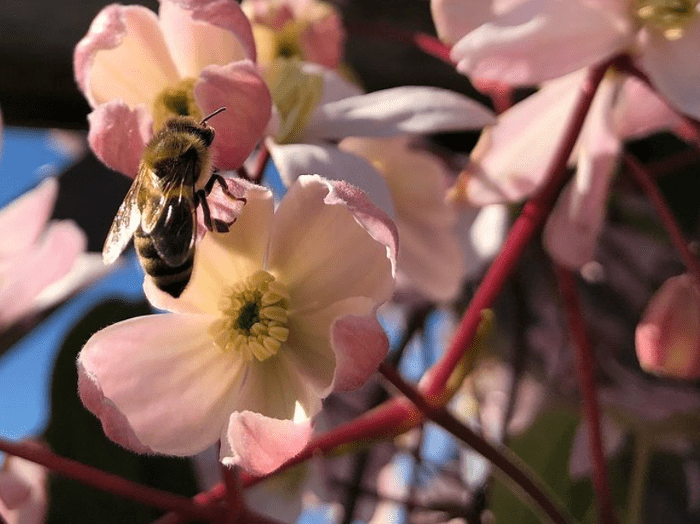
Clematis armandii is a woody perennial in the Ranunculaceae family. These climbing clematises are suitable for any location thanks to their tendrils that cling everywhere. Moreover, this species has lanceolate, large leaves and small white flowers that give off a scent that can be smelled several meters away. This plant also forms very beautiful associations with roses. Furthermore, This Clematis on fence can add a wonderful touch to your decorations.
Clematis cirrhosa
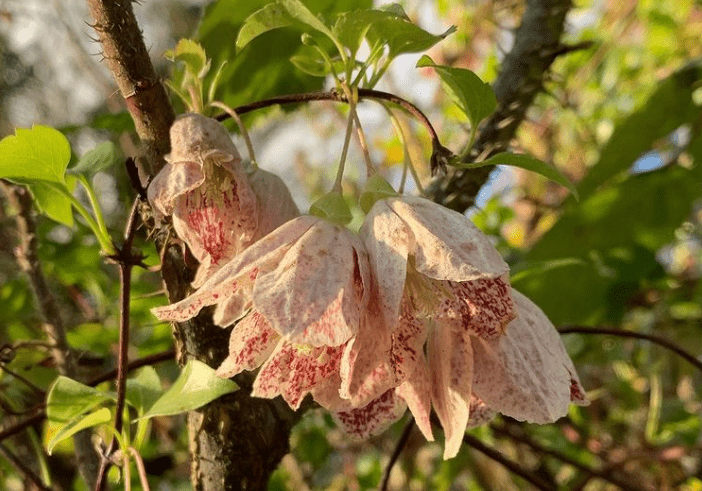
Clematis cirrhosa is a species of flowering plant in the family Ranunculaceae, native to the Mediterranean. It is a beautiful climber clematises that blooms in winter. This early flowering can begin in November and last until March depending on the variety. The bell-shaped flowers offer a pretty palette of hues ranging from pure white to burgundy. Some varieties give off a sweet scent, they will be ideally planted near an entrance or at the foot of a window to take advantage of their scent.
Did You find this helpful? Share it with your friends!